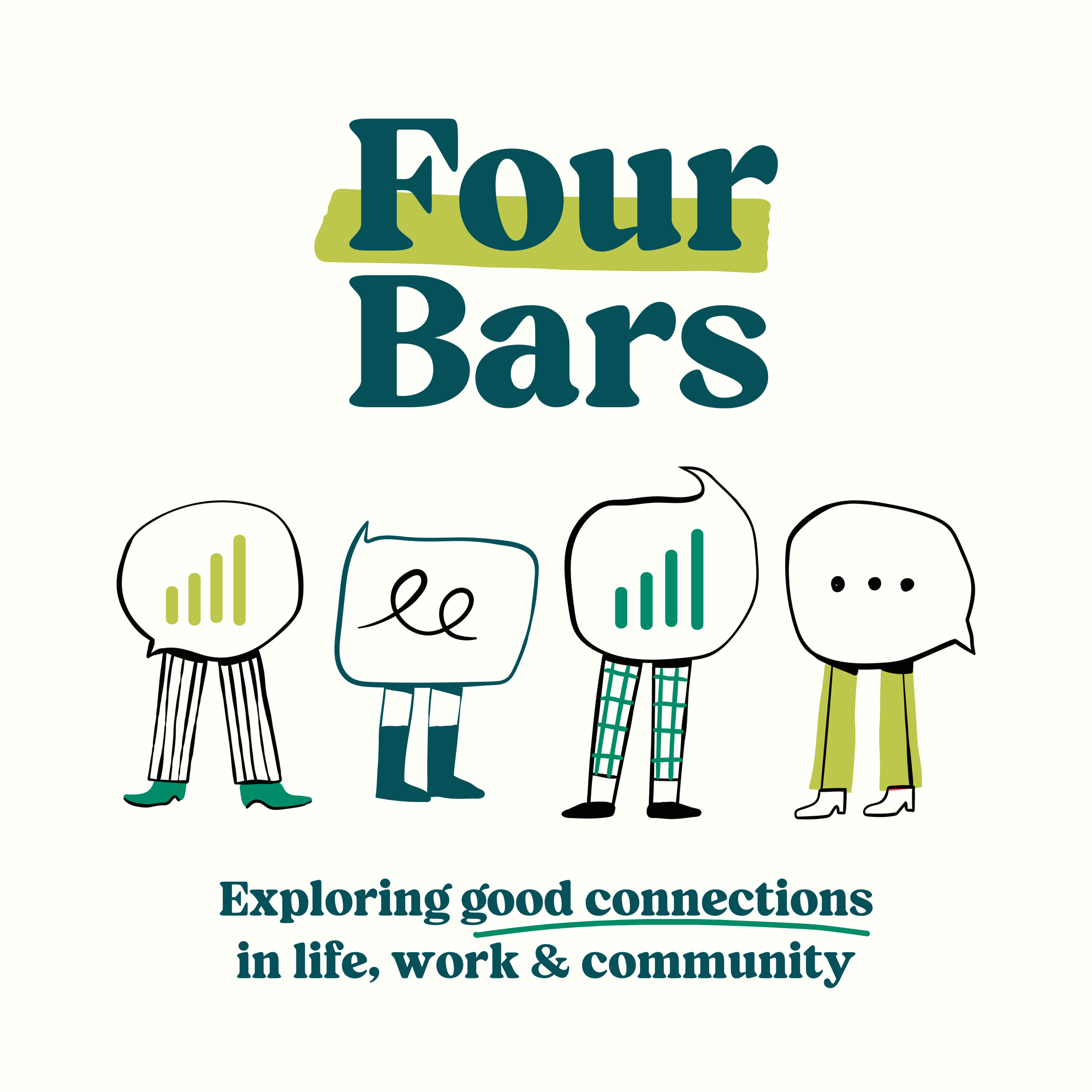Have you ever wondered why your carefully worded suggestions get ignored, or why someone thought you were angry when you were simply being clear? The answer might lie in your influence style.
In this illuminating episode, Ken and Patti Leith delve into the third component of their Interface Methods collaboration tool: influence styles. Building on previous discussions about detail orientation and information processing, they explore the fascinating dynamic between direct and cautious communicators.
Direct communicators speak succinctly, state facts plainly, and get straight to the point. Cautious communicators use qualifying words (might, maybe, possibly), provide context, and emphasize diplomacy. While neither style is inherently better, these differences essentially create two different languages, even when both parties are speaking English.
Through engaging stories and relatable examples, Ken and Patti demonstrate how these communication differences lead to misunderstandings in both professional and personal settings. A cautious boss saying "you might want to consider waiting" might intend a firm directive, while the direct employee hears merely an optional suggestion. Similarly, when a direct person makes a straightforward statement, a cautious receiver often perceives more intensity or frustration than was ever intended.
What makes this challenge particularly difficult is that while we can adapt how we speak relatively easily, it's much harder to change how we hear and interpret others' communication. This places more responsibility on the message sender to adapt their delivery style to match the receiver's preference.
The good news? These differences are behavioral, not personality-based, which means they can be recognized and adapted to with practice. By spotting these differences and willingly adapting our approach, we can dramatically improve our connections with others.
Whether in the workplace, at home, or in community involvement, understanding these influence styles can transform our relationships. Join us to discover how to bridge these communication gaps and connect more effectively with everyone in your life.
Share this episode with someone you think could benefit from understanding these communication differences, and subscribe to catch our exciting plans for the upcoming year!
Follow and stay connected:
Website: fourbarspodcast.com
YouTube: youtube.com/@FourBarsPodcast
Instagram: @edges_Inc
Facebook: EDGES Inc.
LinkedIn: EDGES Inc.
Never miss an update—follow, subscribe, and join the conversation!
More About this Episode
Influence Flops When Language Fails: How Communication Styles Make or Break Collaboration
In any environment where people work together, whether in companies, communities, or families, collaboration is essential. It's the engine that turns ideas into action, transforms friction into innovation, and sustains thriving relationships. But beneath the surface of every successful collaboration is a vital, often overlooked factor: the ability to influence.
The Four Bars Podcast recently explored a powerful truth that many overlook: influence often breaks down when language styles don’t align. In their episode, hosts Ken and Patti Leith break down how the words people choose, especially when shaped by their communication style, can either build connection or subtly cause disconnection.
Their insight goes far beyond theory. It touches every conversation, every meeting, and every negotiation, whether in the workplace, at home, or in civic life.
Why Language Matters in Influence
Influence happens constantly. Whether someone is persuading a colleague to support a new strategy, asking their child to do homework, or negotiating with a vendor, they’re practicing influence. But how they communicate can determine whether or not that influence lands.
The Four Bars team emphasized a crucial dynamic: everyone has a natural communication preference, and those preferences tend to fall somewhere on a spectrum between direct and cautious.
- Direct communicators tend to be succinct, assertive, and action-oriented. Their language is clear, concise, and often feels commanding.
- Cautious communicators are more diplomatic. They choose words carefully, often use qualifiers (like “might” or “consider”), and focus on how their message is received.
Both styles are valid, but problems arise when these styles interact without awareness.
Communication Style Clashes: When Messages Miss the Mark
Ken and Patti offered a scenario that plays out often in real life: A cautious communicator says, “You might want to consider holding off on that email.” What they mean is, “Don’t send that.” But if the listener is more direct in their communication style, they might interpret this as merely a suggestion, and hit send anyway.
The result? Misalignment, friction, and sometimes even damaged relationships.
In one real-world example shared on the podcast, a VP received a frustrating text from a client and wanted to reply immediately. The SVP in the car, a cautious communicator, gently said, “You may want to consider holding off on that reply.” The VP, a direct communicator, took it as an optional suggestion. The message was sent, the client misread the tone, and cleanup work was required to repair the damage.
This kind of breakdown isn’t about intent. It’s about unspoken communication differences. And those differences can quietly derail projects, decisions, and partnerships, all because of a disconnect in how influence is expressed and received.
Behavioral Tools That Help: Interface Methods
What makes the difference in these situations is behavioral awareness, something the Four Bars Podcast often explores using the Interface Methods tool.
Unlike personality assessments, which focus on traits that are difficult to change, Interface Methods measures behavioral preferences, how people prefer to work, process, and communicate. These preferences are visible, adaptable, and deeply useful in collaborative environments.
The tool identifies three key behavioral areas that affect collaboration:
- Detail Orientation, Big picture vs detail-first thinkers.
- Processing Style, Internal processors vs external processors.
- Influence Style, Direct vs cautious communication.
The beauty of this model is its actionability. When people understand these preferences in themselves and others, they can adapt without compromising authenticity.
Influence and Adaptation: The Secret to Effective Communication
Adaptation is at the heart of influence. As the Leiths explain, it’s not about “watering down” communication, it’s about ensuring the message is heard as intended.
Here’s how adaptation plays out between communication styles:
- A direct speaker might naturally say, “We need to fix this now.” But if they know the listener is cautious, they could say, “Let’s talk through the best timing for addressing this.”
- A cautious speaker might usually say, “You may want to consider a change.” But with a direct listener, it’s more effective to say, “I think we need to change this.”
The result? Clarity, alignment, and smoother collaboration.
Adaptation doesn't mean compromising one’s message. It means packaging it in a way that resonates, which is exactly what influence requires.
Why Style Differences Lead to Judgment
Without awareness, differences in communication styles often lead to judgment. A direct communicator might think a cautious one is indecisive. A cautious communicator might view directness as aggressive or insensitive.
But when people understand that these are just preferences, not personality flaws, they can approach one another with curiosity and flexibility rather than resistance.
In Patti and Ken’s own marriage, this plays out regularly. As a direct communicator, Patti may deliver feedback quickly and clearly. Ken, being more cautious, takes time to choose his words. Over the years, they’ve both adapted toward the middle, and the result is stronger communication and fewer misunderstandings.
They even joke about it. When Siri interrupted their GPS route during a bathroom break, Patti snapped, “Siri, shut up,” while Ken, ever the cautious one, said, “Siri, chill.” Same intention, vastly different style, and a perfect snapshot of the influence dynamic they teach.
Influence in Real Life: Work, Family, and Community
The need for adaptable influence shows up everywhere:
- In leadership: executives need to tailor their messaging to teams with different communication styles.
- In parenting: a parent’s delivery can change how a child receives correction or encouragement.
- In partnerships: spouses often hear each other based on how something is said, not just what is said.
As Ken and Patti point out, influence fails when language fails. And language fails when we refuse to adapt it to our audience.
One powerful reminder from the episode: “It’s much harder to change how we hear than how we speak.”
This means that the responsibility lies with the communicator, the person delivering the message. If they want their influence to be effective, they must consider how their message will be received.
What Effective Influence Looks Like
The Leiths outline three clear steps for practicing effective influence through communication:
- Recognize the difference in communication styles.
- Avoid judgment, the other person’s approach isn’t wrong, it’s just different.
- Adapt intentionally to better connect with that person.
It’s also important to observe nonverbal cues. Facial expressions, body language, or silence can all indicate whether a message has landed. If there’s any doubt, a follow-up like “Let me restate that” can make all the difference.
The core message? Influence is not about being right. It’s about being understood.
Building Influence Through Collaboration
Whether in strategic planning sessions, volunteer work, or everyday conversations, collaborative influence depends on clarity and connection. That requires:
- Willingness to adapt
- Understanding your audience’s language style
- Letting go of judgment in favor of connection
Ken and Patti have seen the difference this makes not only in teams and businesses, but in marriages, friendships, and community projects. And they believe that when people are willing to work at connection the same way they work at finding a strong cell signal, the “Four Bars” amazing things can happen.
Final Takeaway: Connection Over Convenience
In a world that’s moving fast, it’s easy to default to our natural style. But real collaboration, the kind that transforms teams and strengthens relationships, takes something more: intentional influence.
That means pausing before speaking, considering how a message might be received, and choosing language that builds understanding.
Because when influence fails, collaboration often follows. But when people adapt their style, even just slightly, communication becomes clearer, friction fades, and collaboration flourishes.



Member discussion: